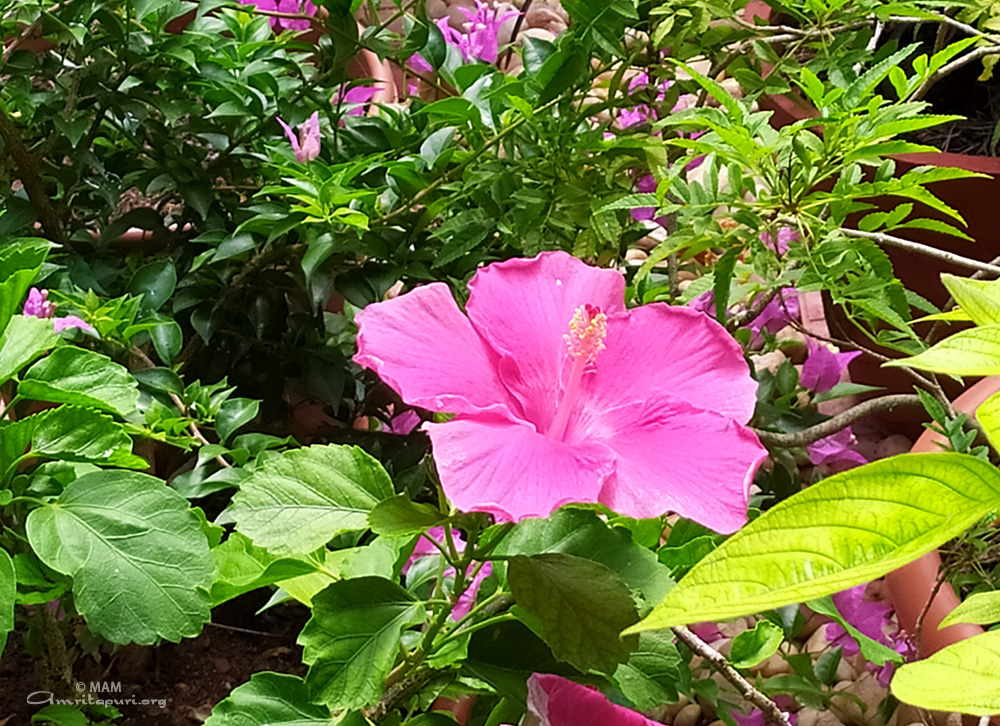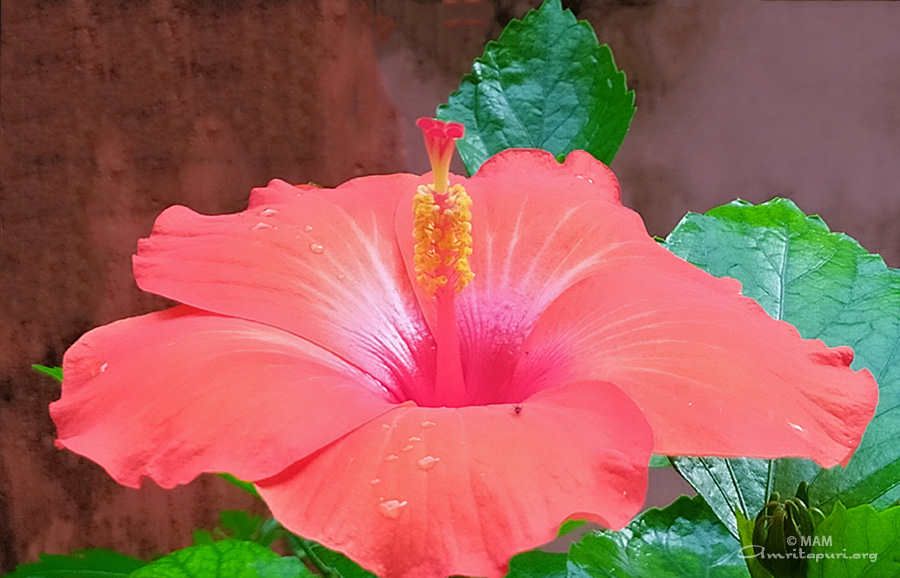Amritapuri – A Bouquet of Flowers IV
Arati to Mother Nature: Hibiscus

Hisbiscus around Amritapuri’s buildings…
Kali Mata resides in Amritapuri’s main temple. And here Hibiscus flowers, her favorite, bloom in plenty; almost all the varieties you see on websites are here. However, Kali is offered bright red hibiscus, those of the color her tongue, or of blood that drips from the severed heads (egos) in her hands.

For Mother Kali 
Common Pink Hibiscus
The ancient deity has with her a great treasure of myths and legends in this ancient land. Amma gives us the spiritual meaning of her fierce form. Kali is the Protector Mother aspect of Brahman. She is merciless when she destroys all negativities inhibiting the sadhak from attaining Liberation. This, her devotees associate with blood, and the native hibiscus, called Chembaratti in Malyalam, Japakusuma in Samskritam, has the exact hue.
However, Amritapuri has a number of colors and sizes of hibiscus. Ashram residents take keen interest in growing these perennial flowers as they are used in worship. Hibiscus is a popular flower, so popular that you have an emoji of it; it conveys feelings deeper than a smiley.
Walking among these plants after morning archana is a very soothing, healing activity. Nature communicates with you. When you pass by a pink or cream hibiscus, you feel the plant smiling at you through its soft flowers. A flower at the end of each of its slender twig! And you too smile invariably. The twig moves in breeze, and acknowledges your smile with a nod.

White with pink 
Yellow 
Rare purple 
White with a delicate pink tinge
The bowl-like shape of a multi colored hibiscus looked like a humble cup seeking downpour of blessings.
An orange variety emerges from the plant looking straight at the sky above. As i was taking its picture, one western sister whispered in my ears, “Oh! This flower is doing Arati to Mother Nature! Look, Arati to the Sky!” Yes! i looked and saw: the petals of the sturdy big flower made a perfect lamp, or the flame itself, and the central filament, the perfect wick!

“Doing arati to the sky!”
One of Amma’s children drew my attention to the mild pink dash on her white hibiscus. “If one doesn’t have love for flowers, one will never see this mild tinge,” she said emphatically.
A little girl showed me with her tender finger how the pink pentagon-shaped hibiscus had a silvery pink frill around it.
A little boy was sprinting his way up to his mother in the bhajan hall; something soft touched his feet. He stopped suddenly, looked it was a hibiscus petal, picked it up and put it on a nearby table -so that no one else will stamp on it- and continued with his run!

Offered in pujas 
How wonderfully these people relate to flowers! Is this the kind of heart that Amma wants all of us to develop, Hridayapushpa?
— By Sandhya

Beautiful rare Amritapuri orange Hibiscus…
